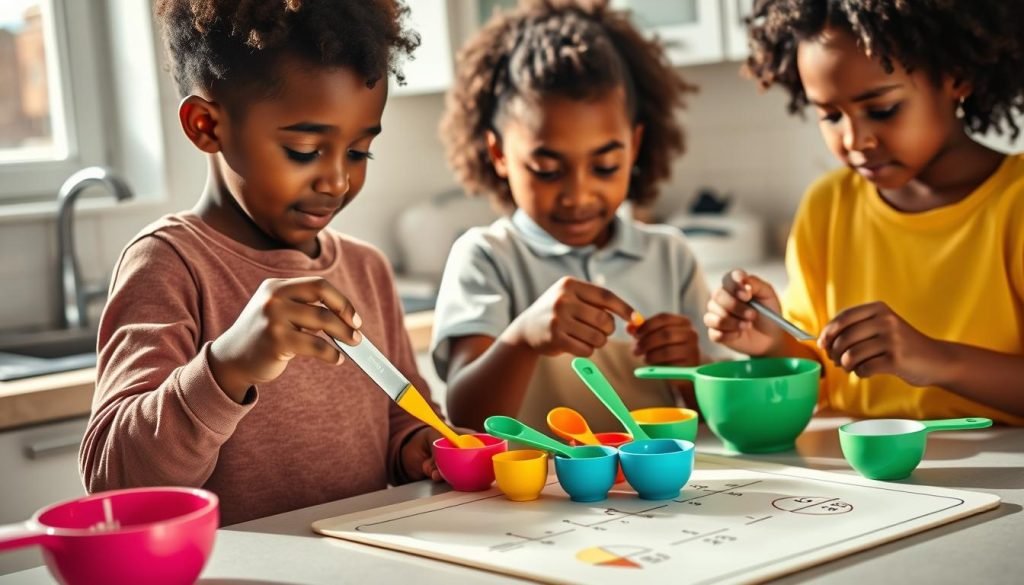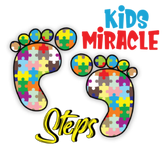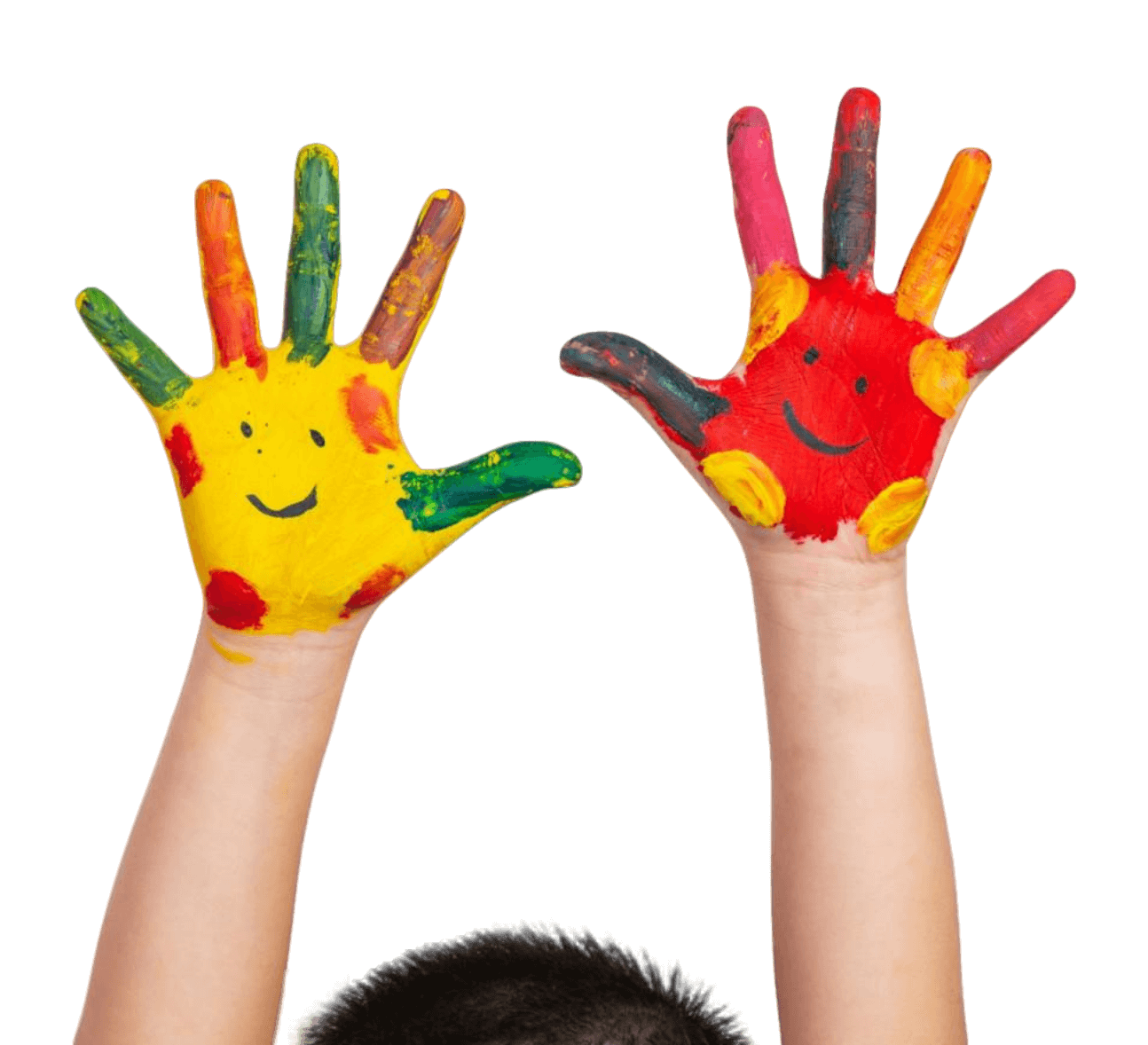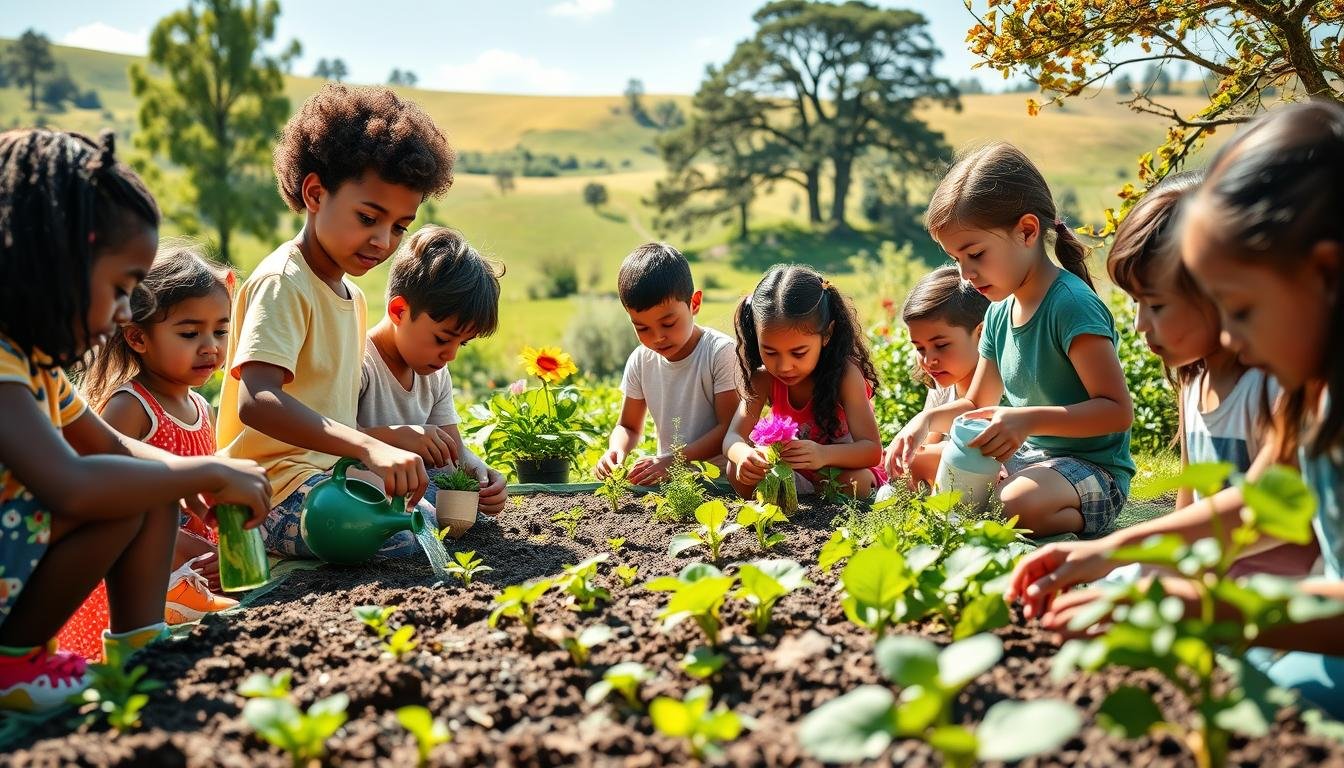Have you thought your kitchen might also be a place for learning, especially in math? Often, we see learning as only happening in classrooms. But, what if learning math is best done in your kitchen? This could be a fresh and fun way for parents and caregivers, especially of children with special needs, to teach. Swapping pencils for whisks and worksheets for recipes could be a game-changer.
Imagine learning math while cooking and baking. This turns hard-to-grasp math concepts into something real and tasty. Measuring ingredients, adjusting recipes, and timing perfectly bring math into the real world. Cooking makes math fun and memorable, which is a huge benefit for learning.
Still unsure? The kitchen has been a powerful classroom in many homeschools. When kids use math to cook, they don’t just see math – they smell, touch, and taste it. This hands-on learning can make math concepts clearer and more interesting.
Every child deserves an educational journey that feeds both their mind and spirit. So, let’s turn your kitchen into a vibrant classroom.
Introducing Math Through Culinary Arts
The kitchen is not just for cooking but also a classroom. Here, culinary arts and math blend perfectly, offering hands-on learning. Kids become mini chefs, learning measurements and timing.
In the kitchen, math lessons become practical and fun. Kids learn math by cooking, like doubling recipes or timing a grill. It’s about using math in real situations, going beyond the basics.
When students cook, they dive into fractions and ratios. For example, making 50% more of a soup that serves 36 needs math. This teaches them multiplication and division through cooking.
| Concept | Application in Culinary Arts | Benefit |
|---|---|---|
| Fractions and Multiplication | Adjusting recipes for larger gatherings | Enhances understanding of scaling and proportions |
| Unit Conversion | Using the Bridge Method for recipe conversions | Supports students with weak math skills to practice conversions effectively |
| Measurement and Precision | Calculating food costs and ingredient measurements | Teaches the importance of accuracy and attention to detail |
Hands-on cooking teaches kids not just recipes, but tough math too. It’s especially helpful for children with special needs who learn by doing. This way, they enjoy learning in a supportive environment. Every time we cook, it’s a chance to learn math. We’re making more than cookies—we’re building math skills for life.
The Magic of Measuring Ingredients
Exploring the kitchen for math learning makes education fun, especially with measuring ingredients. Kids can dive into practical exercises with real-life uses in the kitchen. They learn basic concepts and develop precision.
Getting measurements right is as crucial in cooking as it is in learning math. This hands-on approach helps kids apply math in real-life. They get to count teaspoons or weigh flour, making each step a useful math lesson.
Imagine kids using measuring cups and spoons to get the right amount of ingredients. They convert units, like turning grams into ounces for a cake. This improves their grasp on volume and weight, bringing numbers to life.
Kids as young as four enjoy these kitchen math activities. Simple tasks like squeezing lemons or measuring milk for scones teach them precision. It also instills a sense of achievement and the value of math in daily life.
This teaching method is great for children with special needs. Measuring ingredients offers a multisensory experience that’s both fun and educational.
Doing kitchen math is about sparking curiosity, building confidence, and teaching important life skills. It makes math feel less intimidating and more like an exciting adventure.
Exploring Fractions with Recipe Adjustments
Many of us recall the struggles with learning fractions in school, often wondering how they apply in real life. Good news is, using recipe adjustments in cooking is a creative method to teach kids practical math skills. It shows them how fractions play a crucial role in everyday tasks, beyond just theory.

Take a simple cookie recipe as an example. It may require 2-1/2 cups of flour. If we double the recipe for more friends, we’ll need 5 cups of flour. This straightforward doubling is a perfect chance to teach multiplying fractions.
| Ingredient | Original Quantity | Doubled Quantity |
|---|---|---|
| All-Purpose Flour | 2-1/2 cups | 5 cups |
| Superfine Sugar | 3/4 cup | 1-1/2 cups |
| Unsalted Butter | 1-1/2 sticks (3/4 cup) | 3 sticks (1-1/2 cups) |
| Baking Powder | 1/4 teaspoon | 1/2 teaspoon |
This hands-on method shows kids more than just how to adjust a recipe. It teaches them by doing, which is often more impactful than just watching. This approach makes math stand out and be enjoyable. Also, doing these recipe adjustments helps kids see why proportions and precision are crucial in math skills.
As we try more complex recipes, kids get exposed to various math calculations. Math becomes relatable and fun, turning abstract concepts into something real like cookies! Whether halving, doubling, or tripling measurements, each step is a chance to enhance their understanding of fractions. It’s a way to build their confidence in applying these practical math skills daily.
Timing is Everything: Learning the Math of Cooking Times
The kitchen is not just a place for cooking but also a classroom for learning. Cooking times are key for making great food and teaching math. When children use timers, they learn about time and improve their time management skills. Timing a roast or cookies lets them practice essential math skills.
Using timers teaches kids about patience and being precise. They get excited to calculate baking times for cookies. Seeing their perfectly timed cookies brings joy. This way, kids not only learn time management but also develop their thinking skills. These are important in school and daily life.
Cooking times and measurements are very important in the kitchen. The table below shows how these elements help kids learn math. It mixes exact measurements with time, offering support especially for kids with special needs.
| Activity | Cooking Time | Math Skill |
|---|---|---|
| Baking Cookies | 12-15 minutes | Reading time, setting timers |
| Roasting Vegetables | 25-30 minutes | Adding and subtracting time |
| Making Pancakes | 5 minutes per batch | Calculating multiples |
| Cooking Rice | 18 minutes | Understanding and applying exact times for perfect texture |
Cooking with timers makes learning math fun for kids. They get to apply math in a playful and practical way. Learning in the kitchen teaches them about time management. This skill is something we all need every day. From boiling an egg perfectly to baking bread, cooking is a chance for kids to learn and grow in a loving environment.
Budgeting: The Price of Ingredients and Cost Calculations
Learning budgeting skills with cooking helps build financial literacy. It makes learning about money fun and useful. Every ingredient’s cost changes your meal’s total cost. This matters for anything from a family meal to a school project.
The Creamy Tomato and Spinach Pasta meal is cheap and easy. Knowing its cost per serving helps you save money. If you want to learn more about saving in the kitchen, check out food cost calculations.
| Ingredient | Quantity | Unit Cost | Total Cost |
|---|---|---|---|
| Diced Tomatoes | 1 can | $0.59 | $0.59 |
| Yellow Onion | 1 medium | $0.28 | $0.28 |
| Garlic | 2 cloves | $0.16 | $0.16 |
| Penne Pasta | 1/2 lb | $0.75 | $0.75 |
| Spinach | 4 oz | $0.65 | $0.65 |
| Cream Cheese | 2 oz | $0.20 | $0.20 |
| Total | $2.63 |
Using practical math in everyday tasks helps everyone. It teaches important skills beyond just numbers. Especially for special needs individuals, it boosts confidence and independence in finance management. Learn more at Kids Miracle Steps.
Managing culinary costs is about more than just money. It’s about smart thinking and preparing for life’s challenges. Begin with small steps, aim high, and cook wisely!
The Secret to Learning Math: Engaging Kids in the Kitchen
Discovering the best way to teach math brings us to places like the kitchen. Here, among pleasant smells and busy cooking, math becomes alive. We mix math with cooking, making it more fun than books ever could.
For kids, especially those needing more support, the kitchen is friendly and fun. Here, we teach them about measurements, shapes, and budgeting through cooking. All recipes turn into fun math lessons.
- Measuring ingredients for a simple pound cake illustrates weight and balance, teaching the conversion between different units; grams to pounds.
- Adjusting the volumes for a milkshake introduces children to the concept of ratios and proportions.
- Shape cutting with cookies or creating tangrams with vegetables helps in understanding geometry and spatial relationships.
- Experimenting with the variations in baking times for different oven temperatures instills an understanding of number scales and time management.
These activities aren’t just learning; they’re vital for understanding numbers in real life. By cooking a meal, kids see their math work in action. This real experience takes the mystery out of math and builds confidence and practical skills.
| Activity | Math Concept | Real-World Application |
|---|---|---|
| Doubling/Halving Ingredients | Fractions | Adapting recipes to serve more or fewer people |
| Timing Multiple Dishes | Addition/Subtraction | Coordinating dishes to complete a meal on time |
| Adjusting Salad Dressings | Decimals and Ratios | Creating the perfect balance of flavors |
| Measuring for a Béchamel Sauce | Ratios | Maintaining consistency and texture in sauces |
By using the kitchen as a fun classroom, we make math clearer and more loved. So, the next time you want fun and effective math lessons, try cooking. It could be just what you need for success.
Conclusion
In our journey, we’ve seen how the kitchen is a goldmine for math learning success. At Kids Miracle Steps, we believe that the usual way of teaching math can make kids anxious. This stops them from really getting it. Studies show this stress is common. Yet, we can fight it with a caring environment, especially for kids who need extra help. Culinary classroom benefits give kids a basic understanding of numbers. This is key to learning more complex math ideas.
We are all about building a supportive community for families with special needs kids. Through cooking and learning together, we can break down educational barriers. At Kids Miracle Steps, we empower parents. We show how to turn cooking time into fun math lessons. Let our kids enjoy learning math and celebrate their achievements in our homes’ heart—the kitchen.






